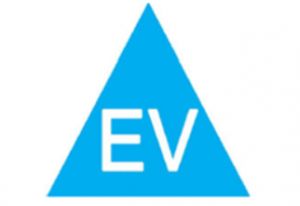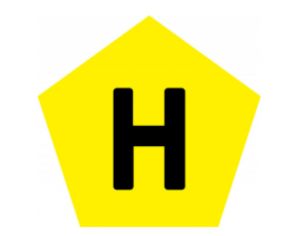Queenslanders that own an electric vehicle (EV) will soon be required to label their car under new safety regulations from the state government.
As of 1 October 2021, all EVs including hybrid, as well as hydrogen fuel cell vehicles in Queensland that were built or modified from an existing vehicle after 1 January 2019, will need to display an ‘EV’ or ‘H’ sticker on their license plate.
The mandatory labelling comes after concerns that the batteries in these vehicles can be hazardous for emergency services during rescue situations.
Speaking to Canstar Blue, Aussie EV start-up Bell Resources CEO and founder of Bell Resources, Mark Avery explained:
“The reason for doing this is in case first responders, whether that be the fire brigade or ambulance people, need to get someone that’s had an accident out of one of these vehicles,” he said. “The label will signify that the vehicle is an electric vehicle and make them aware of it when they first get onto the scene so that they can make an assessment of the situation.
“This is because you have to treat it differently in the case of an electric vehicle. There is a possibility of electrocution with these cars if the battery pack has been damaged during the vehicle collision.”
Drivers will be required to display these stickers on their front and rear license plates from 1 October 2021, but a grace period will be in place until 1 January 2022.
Sunshine State residents without the correct labelling in the new year however, could face a $137.05 fine and the loss of one demerit point.
Drivers can order a vehicle label from the Motor Trades Association of Queensland (MTAQ), at the price of $8 for members and $10 for non-members.
RACQ members can score a set of labels for free by heading into their local store.
Several other states, including New South Wales, Victoria, South Australia and Tasmania, have already had this labelling requirement in place since 2019.
AGL EV Plans
Here is AGL’s Electric Vehicle Plan on our database that includes a link to the retailer’s website for further details. This is a product from a referral partner†. These costs are based on the Citipower network in Melbourne but prices may vary depending on your circumstances. This comparison assumes general energy usage of 4000kWh/year for a residential customer on a single rate tariff. Please use our comparison tool for a specific comparison in your area. Our database may not cover all deals in your area. As always, check all details of any plan directly with the retailer before making a purchase decision.
What do these labels look like?
The mandatory label will be a blue, triangular shaped sticker, with the word ‘EV’ marked into. For Hydrogen vehicles however, the label will be a bright yellow pentagonal shape with a ‘H’ marked into it. There are certain requirements for the position of each label too.
For electric and hybrid vehicles, the label must:
- Be affixed to a plate made of metal that is at least 1mm thick.
- Be an equilateral triangular shape where each side has width of 30mm in length and each interior angle of which is 60º.
- Have a blue surface that complies with class 2 of Australian Standard 1906.1 Retroreflective Materials and Devices for Road Traffic Control Purposes—Retroreflective Sheeting.
- Be marked ‘EV’ in white capital letters that are at least 8mm high.
- Be fixed to the number plates so that the letters on the label are in an upright position (this can be done using screws or double-sided tape).
- Not wholly or partly obscure any characters on the number plates.

For hydrogen vehicles, the label must:
- Be affixed to a plate made of metal that is at least 1mm thick.
- Be a regular pentagonal shape where each side is 20mm in length and each interior angle of which is 108º.
- Must have a yellow surface that complies with class 2 of Australian Standard 1906.1 Retroreflective Materials and Devices for Road Traffic Control Purposes—Retroreflective Sheeting.
- Must be marked ‘H’ in a black capital letter that is at least 10mm high.
- Must be fixed to the number plates so that the letter on the label is in an upright position (this can be done using screws or double-sided tape).
- Must not wholly or partly obscure any characters on the number plates.

How do I know if I need to order this for my electric vehicle?
If you are a Queenslander who owns an electric vehicle that was manufactured after 1 January 2019, you will need to order this label and place it on your EV. This also goes for cars which have been modified to be electric after 1 January 2019. The Department of Transport and Main Roads also notified the affected vehicle owners of these changes earlier this year.
If you are purchasing a new electric or hydrogen vehicle, it’s best to discuss labelling requirements with the manufacturer or car dealer first, to avoid having to back track and order this label at a later date.
Drivers who own an electric vehicle that was manufactured before 1 January 2019 while not necessarily required to display these labels, are still encouraged to add them to their vehicle if they can, to ensure the safety of emergency services personnel.
Red Energy EV Plans
Here is Red Energy’s Electric Vehicle Plan on our database that includes a link to the retailer’s website for further details. These costs are based on the Ausgrid network in Sydney but prices may vary depending on your circumstances. This comparison assumes general energy usage of 3900kWh/year for a residential customer on a single rate tariff. Please use our comparison tool for a specific comparison in your area. Our database may not cover all deals in your area. As always, check all details of any plan directly with the retailer before making a purchase decision.
Here is Red Energy’s Electric Vehicle Plan on our database that includes a link to the retailer’s website for further details. These costs are based on the Citipower network in Melbourne but prices may vary depending on your circumstances. This comparison assumes general energy usage of 4000kWh/year for a residential customer on a single rate tariff. Please use our comparison tool for a specific comparison in your area. Our database may not cover all deals in your area. As always, check all details of any plan directly with the retailer before making a purchase decision.
Here is Red Energy’s Electric Vehicle Plan on our database that includes a link to the retailer’s website for further details. These costs are based on the Energex network in Brisbane but prices may vary depending on your circumstances. This comparison assumes general energy usage of 4600kWh/year for a residential customer on a single rate tariff. Please use our comparison tool for a specific comparison in your area. Our database may not cover all deals in your area. As always, check all details of any plan directly with the retailer before making a purchase decision.
Here is Red Energy’s Electric Vehicle Plan on our database that includes a link to the retailer’s website for further details. These costs are based on the SA Power network in Adelaide but prices may vary depending on your circumstances. This comparison assumes general energy usage of 4000kWh/year for a residential customer on a single rate tariff. Please use our comparison tool for a specific comparison in your area. Our database may not cover all deals in your area. As always, check all details of any plan directly with the retailer before making a purchase decision.
Labelling latest move in preparation for electric vehicle growth
As EV ownership increasingly becomes more popular, these new labelling requirements will help to prepare for the future, added Mr Avery.
“These requirements signify the coming of age of electric vehicles into the market place,” he said. “It’s a sign that the market is growing and going from early adopters to mainstream. Really what’s happening is we’re seeing the regulators or in this case the state government getting ready for the mass market adoption of EVs. With more of a chance of hazardous incidents occurring with the number of electric vehicles on the road, these policies and procedures are required.”
“What they’re doing is a bit of retrospective legislation, but what you might find going forward is that the number plates will incorporate the electric vehicle signification into their arrangements.
As of 1 May 2021, Queensland’s Department of Transport and Main Roads recorded over 4,000 electric vehicles registrations across the state.
Although this mode of transport is growing, EVs only made up 0.7 per cent of car sales in Australia last year.

Image credit: Perpis/Shutterstock.com, Queensland Government Department of Roads and Transport.

Share this article